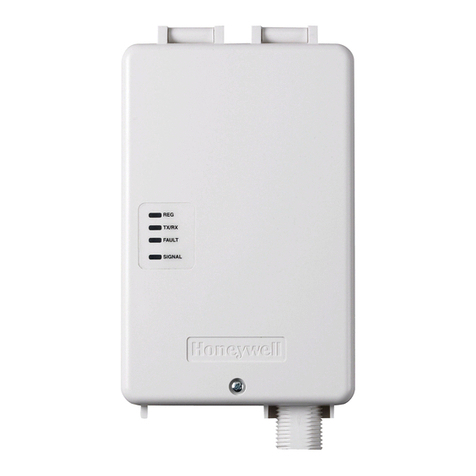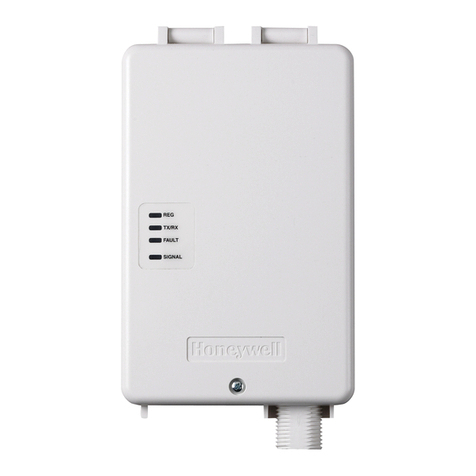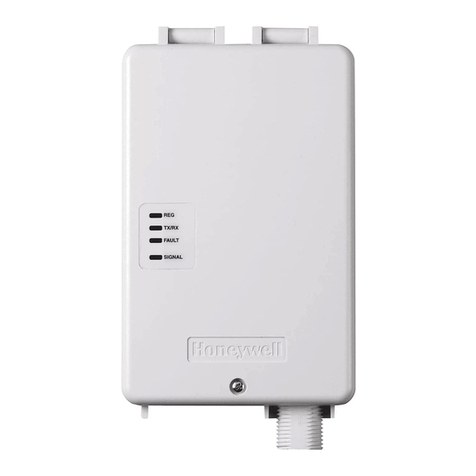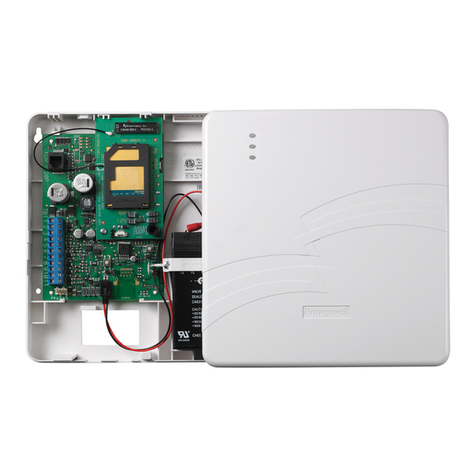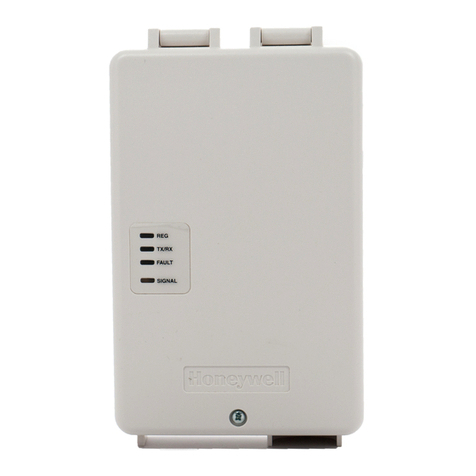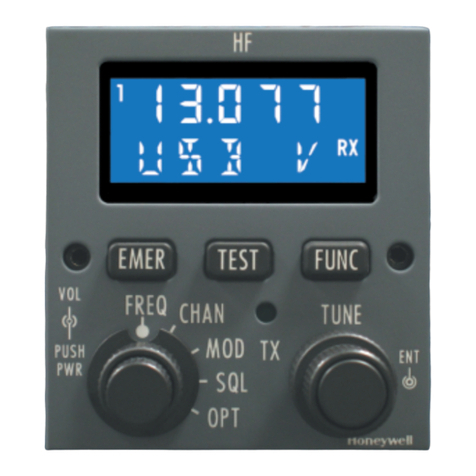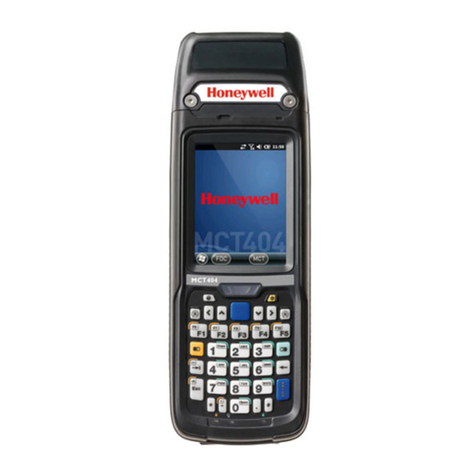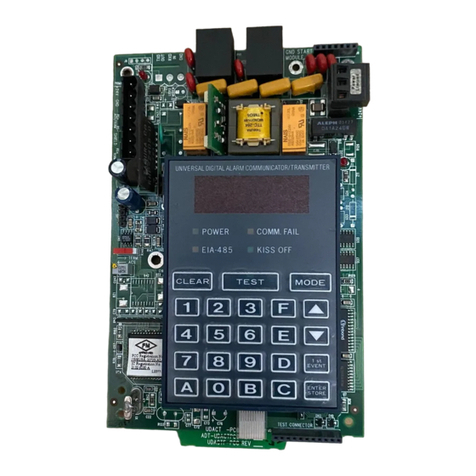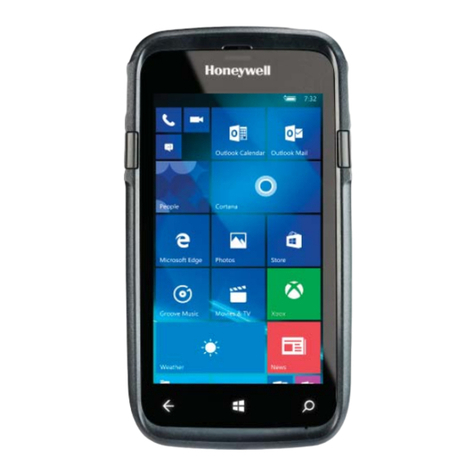
Ê800-24737_Š
800-24737 9/18 Rev A
2 Corporate Center Drive, Suite 100,
P.O. Box 9040, Melville, NY 11747
Copyright 2018 Honeywell International Inc.
www.honeywell.com/security
4. Setup the Account, Program, and Register the Communicator
SETUP THE ACCOUNT
To setup the customer account you will need to contact the central monitoring station to
get account information, and have access to the AlarmNet 360 website. To access the
AlarmNet 360 website visit – www.alarmnet360.com
If you do not wish to use the AlarmNet 360 website, you may call AlarmNet to setup the
account; just phone 800-222-6525, then select option 1.
(Monday–Friday 8:00 am to 9:00 pm, Saturday 9:00 am to 5:30 pm EST)
Have the following information ready:
Primary City ID (two digits),
obtained from your monitoring
station.
Primary Subscriber ID (four digits),
obtained from your monitoring station.
Primary Central Station ID
(two digits), obtained from
your monitoring station.
Communicator's MAC ID, and MAC
CRC number is located on the box and
inside the communicator.
PROGRAM THE COMMUNICATOR
Using the AlarmNet 360 website:
Log in and complete the communicator programming using the “Program New Account”
tool. (Refer to the online help if needed.)
When complete you may log out of the AlarmNet 360 website.
Using the 7720 Programming Tool:
Ensure the system is powered up and connect the programming tool to the communicator. Accept all default
settings except the following prompts which need to be answered. Then exit the programming mode.
Comm Path Choice
(IP&Cell)
Choose IP&Cell, IP, or Cell as your communications path.
Device Mode ECP
Press [#].
Primary City ID (??)
Enter number 01-99, then press [#].
Primary CS ID (??)
Enter number 01-FE, then press [#].
Primary Sub ID (????)
Enter number 0001-9999, then press [#].
Device Address (03)
Accept the default by pressing [#], or change if this address is
already used.
The following prompt appears if both IP & Cell have been selected as the Comm Path Choice.
Notify Panel of Neither
Fault
Press [] to scroll, choose Notify Panel of Both IP&Cell Flts,
then press [#].
REGISTER THE COMMUNICATOR
Registering the communicator activates the account with AlarmNet and enables the control panel to send reports. There are three ways to register the communicator:
You can register by logging into AlarmNet 360 choosing “Programming” tool. Search for the account using the Account Information or MAC ID. Under the “Actions” column, use the pulldown menu
select “Register” the account.
After the communicator is installed and programmed, you can register by clicking the Tamper Switch 3 times.
After the communicator is installed and programmed, you can register by using the 7720P Programming tool. Simply: Press [Shift] then press []. Please wait for "Registration SUCCESS" message.
LED STATUS TABLE
TB 1
6
7
8
5
10
11
9
2
3
4
1
SIGNAL QUALITY
/ MODE AND
STATUS LEDs
1
ON – Message transmission pending.
QUICK PERIODIC BLINK – Normal.
FAST BLINK – Message waiting for network ACK.
SLOW BLINK – Idle power abnormal.
SLOW BLINK – In unison with green LED, registration in progress.
Ethernet Link/Activity
GREEN
ON – Link detected.
OFF – No link detected.
BLINKS – Network activity.
ON – 100 MB/S link to Internet.
OFF – 10 MB/S link to Internet.
Link Speed
GREEN
Note: If all LEDs FAST BLINK in unison with the signal quality LEDs this
indicates a Hardware Error.
ON – No contact with network.
OFF – Normal.
SLOW BLINK – Loss of communication with the panel (ECP fault).
FAST BLINK – No network contact AND loss of communication with the panel.
ON – NOT registered with AlarmNet.
OFF – Registered with AlarmNet.
FAST BLINK – Download session with Compass in progress.
SLOW BLINK – In unison with yellow LED, registration in progress.
MODE
SWITCH
TAMPER
SWITCH
GRN
YEL
RED
MODULE'S SIGNAL QUALITY
When the Mode Switch is NOT depressed, LED 1 will illuminate red.
The remaining LEDs indicate Signal Quality.
MODULE'S OPERATION MODE
When the Mode Switch IS depressed, LED 1 will be OFF.
LEDs 2 and 3 indicate the module's communication mode with the control panel.
Mode LED 2 (yellow) LED 3 (green)
When the Mode Switch IS depressed, LED 1 will be OFF.
LEDs 4, 5, and 6 indicate the module's Status.
FAST BLINK - Module registered,
second site available, excellent
signal strength.
LED 4 (green) LED 5 (green) LED 6 (green)
ON - Connected to
Internet.
ON - Module registered, no second
site available.
ON - Cell service
available.
OFF - No Cell service
available. OFF - Module not registered with
network carrier.
FAST BLINK - Cell in
use. SLOW BLINK - Module registered,
second site available, and low signal
strength.
NORMAL BLINK - Module registered,
second site available, acceptable
signal strength.
OFF - Not connected
to Internet.
LTE-I-005-V0
MODULE'S STATUS
ECP OFF OFF
Zone ON OFF
FACTORY
USE ONLY
Cellular Status LED
Connected to cell network (Registered
idle or in a data call) -
Slow Blinking (period: 1s On/1s Off)
Searching / Not registered / Turning Off -
On
Module is not powered up -
Off
SPECIFICATIONS
Current Drain: 90mA average (rms) standby, 125mA (rms) active
Frequency Bands:
LTE Band 2 LTE Band 4 LTE Band 5 LTE Band 12 LTE Band 13 WCDMA Band II WCDMA Band V
LTE-IV X X X
LTE-IA X X X X X X X
LTE-IC X X X X X X X
RF Exposure
Warning – The antenna(s) used for this device must be installed to provide a separation distance of at least
7.8 inches (20 cm) from all persons and must not be co-located or operating in conjunction with any other
antenna or transmitter except in accordance with FCC and ISED multi-transmitter product procedures.
Mise en Garde
Exposition aux Fréquences Radio : La/les antenne(s) utilisée(s) pour cet émetteur doit/doivent être
installée(s) à une distance de séparation d'au moins 20 cm (7,8 pouces) de toute personne et ne pas être
située(s) ni fonctionner parallèlement à tout autre transmetteur ou antenne, excepté en conformité avec les
procédures de produit multi transmetteur FCC et ISED.
FEDERAL COMMUNICATIONS COMMISSION & ISED STATEMENTS
The user shall not make any changes or modifications to the equipment unless authorized by the Installation Instructions or
User's Manual. Unauthorized changes or modifications could void the user's authority to operate the equipment.
CLASS B DIGITAL DEVICE STATEMENT
This equipment has been tested to FCC requirements and has been found acceptable for use. The FCC requires the following
statement for your information.
This equipment generates and uses radio frequency energy and if not installed and used properly, that is, in strict accordance
with the manufacturer's instructions, may cause interference to radio and television reception. It has been type tested and found
to comply with the limits for a Class B computing device in accordance with the specifications in Part 15 of FCC Rules, which are
designed to provide reasonable protection against such interference in a residential installation. However, there is no guarantee
that interference will not occur in a particular installation. If this equipment does cause interference to radio or television
reception, which can be determined by turning the equipment off and on, the user is encouraged to try to correct the interference
by one or more of the following measures:
• If using an indoor antenna, have a quality outdoor antenna installed.
• Reorient the receiving antenna until interference is reduced or eliminated.
• Move the radio or television receiver away from the receiver/control panel.
• Move the antenna leads away from any wire runs to the receiver/control panel.
• Plug the receiver/control panel into a different outlet so that it and the radio or television receiver are on different branch
circuits.
• Consult the dealer or an experienced radio/TV technician for help.
ISED CLASS B STATEMENT
This Class B digital apparatus complies with Canadian ICES-003.
Cet appareil numérique de la classe B est conforme à la norme NMB-003 du Canada.
FCC / ISED STATEMENT
This device complies with Part 15 of the FCC Rules, and ISED’s license-exempt RSSs. Operation is subject to the following two
conditions: (1) This device may not cause harmful interference (2) This device must accept any interference received, including
interference that may cause undesired operation.
Cet appareil est conforme à la partie 15 des règles de la FCC et exempt de licence RSS d’ISED. Son fonctionnement est
soumis aux conditions suivantes: (1) Cet appareil ne doit pas causer d’interférences nuisibles. (2) Cet appareil doit accepter
toute interférence reçue y compris les interférences causant une réception indésirable.
SUPPORT, WARRANTY, & PATENT INFORMATION
For the latest documentation and online support information, please go to:
https://mywebtech.honeywellhome.com/
For the latest warranty information, please go to:
http://www.security.honeywell.com/hsc/resources/wa/index.html
For patent information, see www.honeywell.com/patents
Responsible Party / Issuer of Supplier’s
Declaration of Conformity: Honeywell International,
2 Corporate Center Drive., Melville, NY 11747, Ph:
516-577-2000
Partie responsable / Émetteur de la déclaration de
conformité du fournisseur : Honeywell International, 2
Corporate Center Drive., Melville, NY 11747, Tél.
516 577-2000
